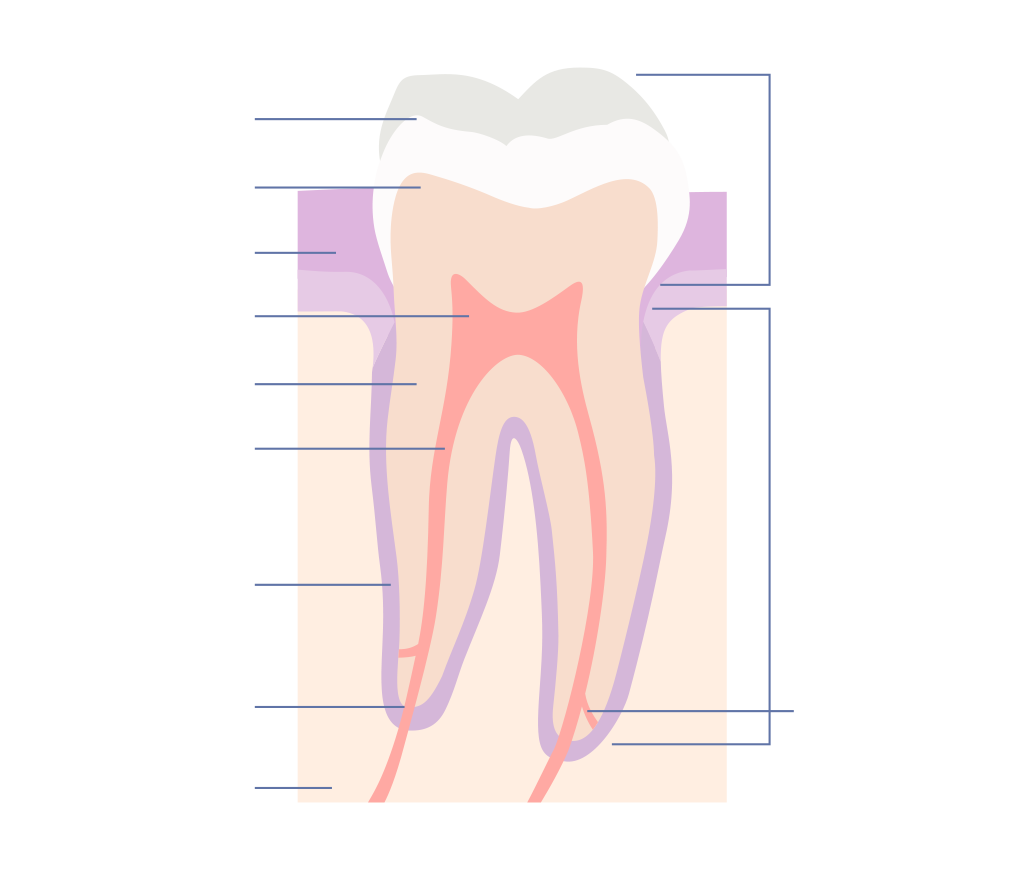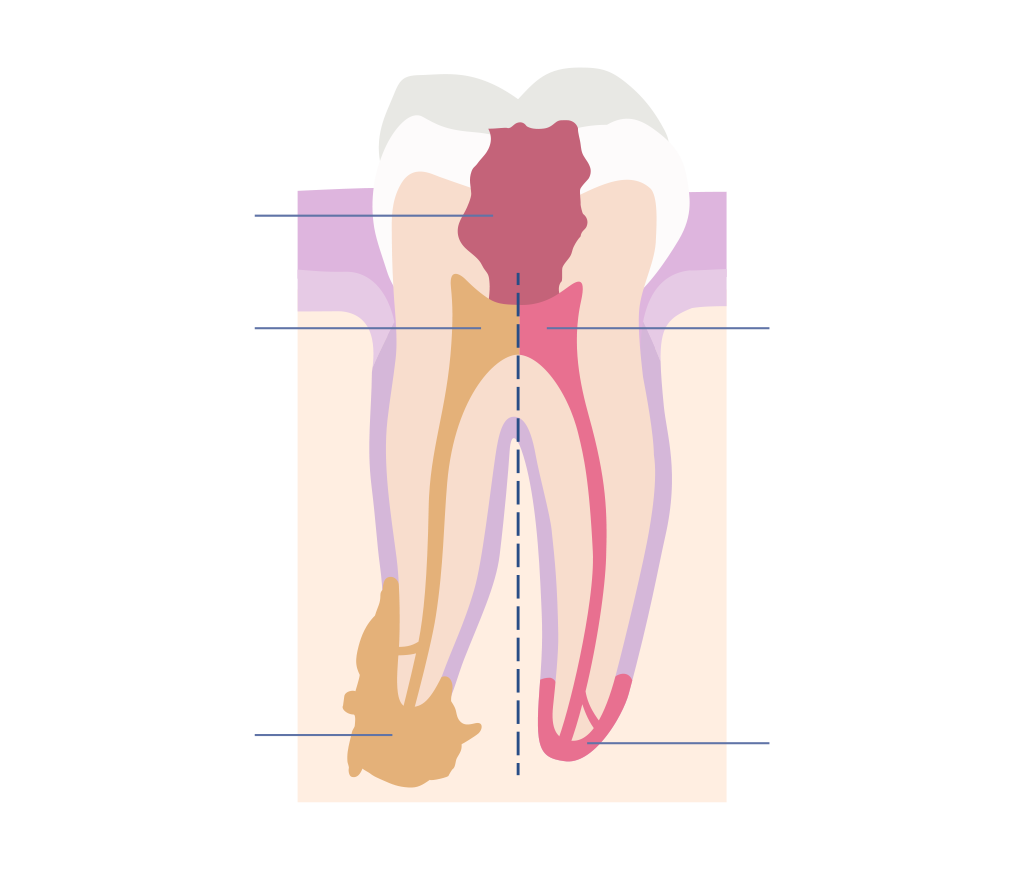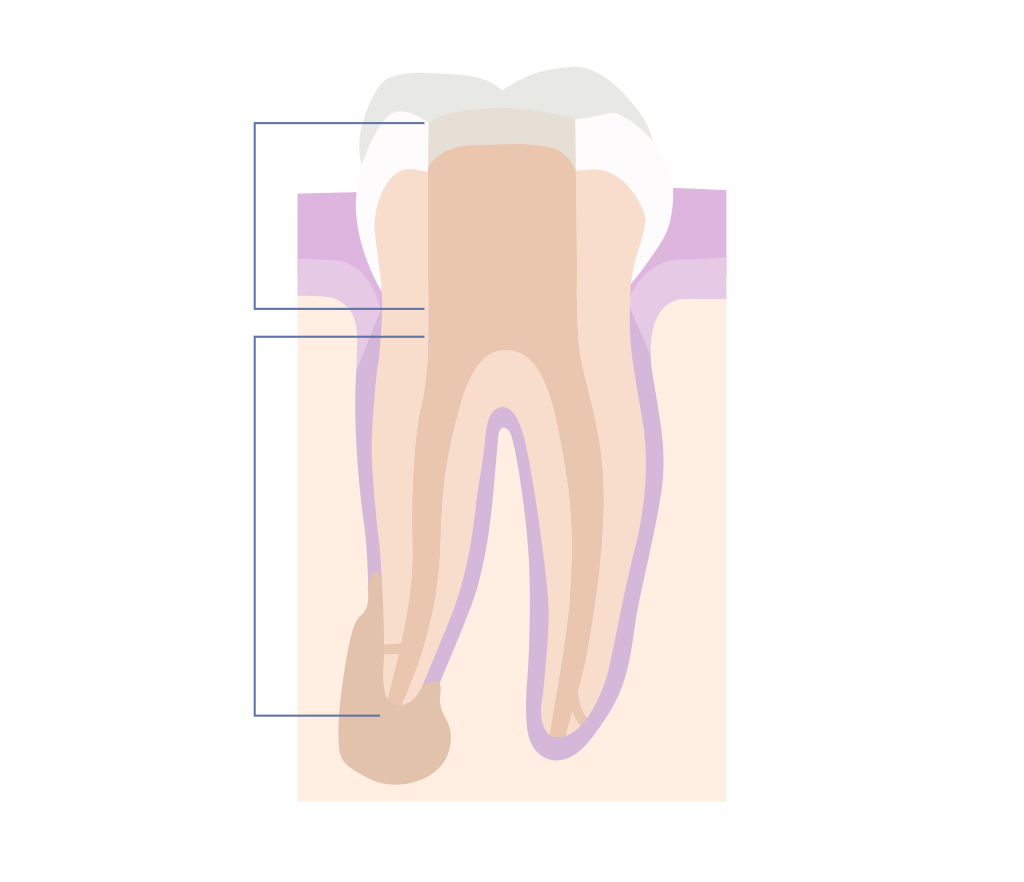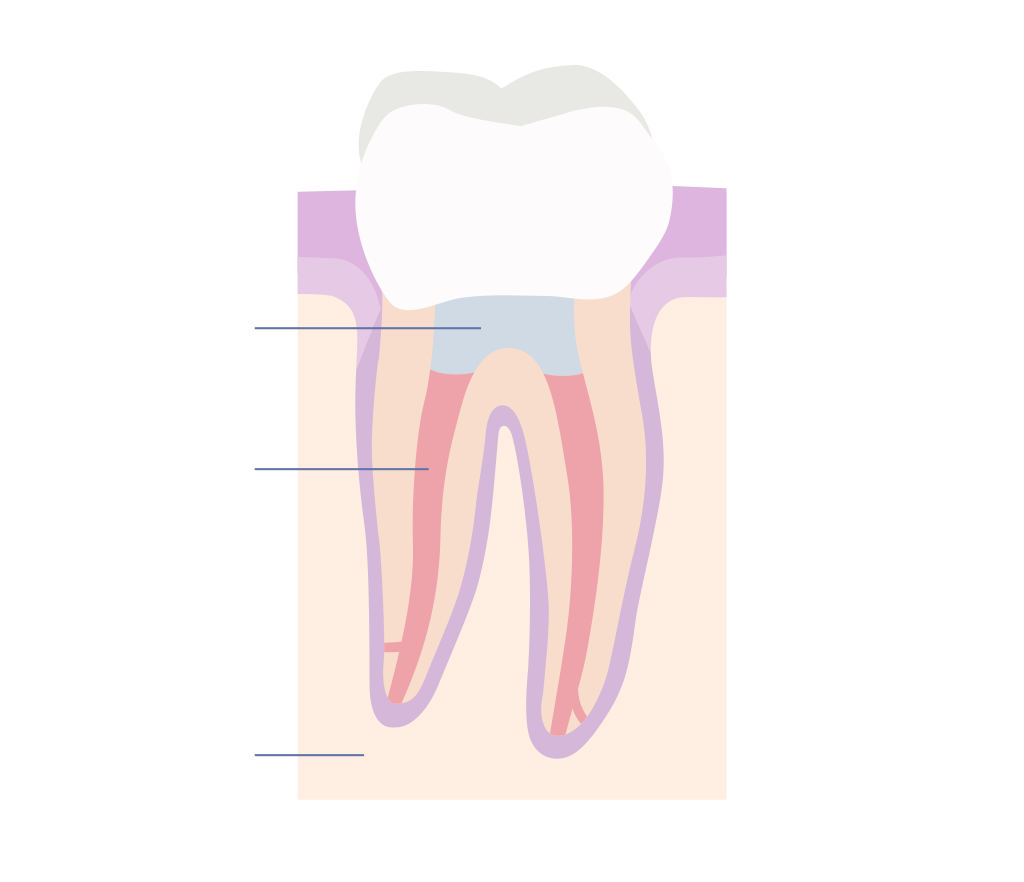What is root canal treatment?
Fixing the root of the problem
If you’ve been told you need a root canal, you’re not alone. Root canal treatment (or endodontic treatment) is a common way to relieve tooth pain and avoid an extraction.This page will give you more insight into what a root canal involves.
“Endo” is the Greek word for “inside” and “odont” is Greek for “tooth.” Endodontic treatment is all about treating the inside of the tooth. Root canal treatment is the most common endodontic treatment.
Anatomy of a tooth

Inside the tooth, under the white enamel and a hard layer called the dentin, is soft tissue called the pulp. The pulp contains blood vessels, nerves and connective tissue.
The pulp extends from the crown of the tooth to the tip of the roots where it connects to the tissues surrounding the root. The pulp can become infected or inflamed through deep tooth decay or a broken or cracked tooth. This can lead to pain or an abscess.
An infected and inflamed tooth

A root canal treatment may be done over one or two appointments. It is always done with strong pain-relieving anesthetic (and sedation if you need it), which will keep you comfortable. The endodontist removes the pulp, cleans the root canal and reseals the tooth. The pulp is important during a tooth’s growth but, once a tooth is fully mature, it can survive without the pulp because it is nourished by the tissues surrounding it.
The root canal cleaned and shaped

After the treatment, you will return to your dentist to restore or crown the treated tooth. The tooth will then function normally and should last many years.
In most cases, your endodontist will place a temporary filling to close the opening. Your dentist will remove the temporary filling before the tooth is restored.
If your tooth does not have sufficient structure to hold the restoration in place, your dentist or endodontist may place a post inside the tooth. Your endodontist and dentist will be happy to discuss the exact restoration needed for your tooth.
A fully restored tooth after endodontic treatment

After your root canal treatment
For the first few days after treatment, your tooth may feel sensitive, especially if there was pain or infection before the procedure. This discomfort can be relieved with over-the-counter or prescription medications. Follow your endodontist’s instructions carefully.
Your tooth may continue to feel slightly different from your other teeth for some time after your endodontic treatment is completed. If you have severe pain or pressure that lasts more than a few days, please call us.
With specialist treatment by an endodontist and proper care, your teeth that have had root canal treatment should last a lifetime.
Old root canal problems?
Sometimes patients come to us with old root canals or problem root canals that have become painful or diseased months or years after treatment. In this case, we can retreat the tooth to remove any infection and ensure it can heal again.

